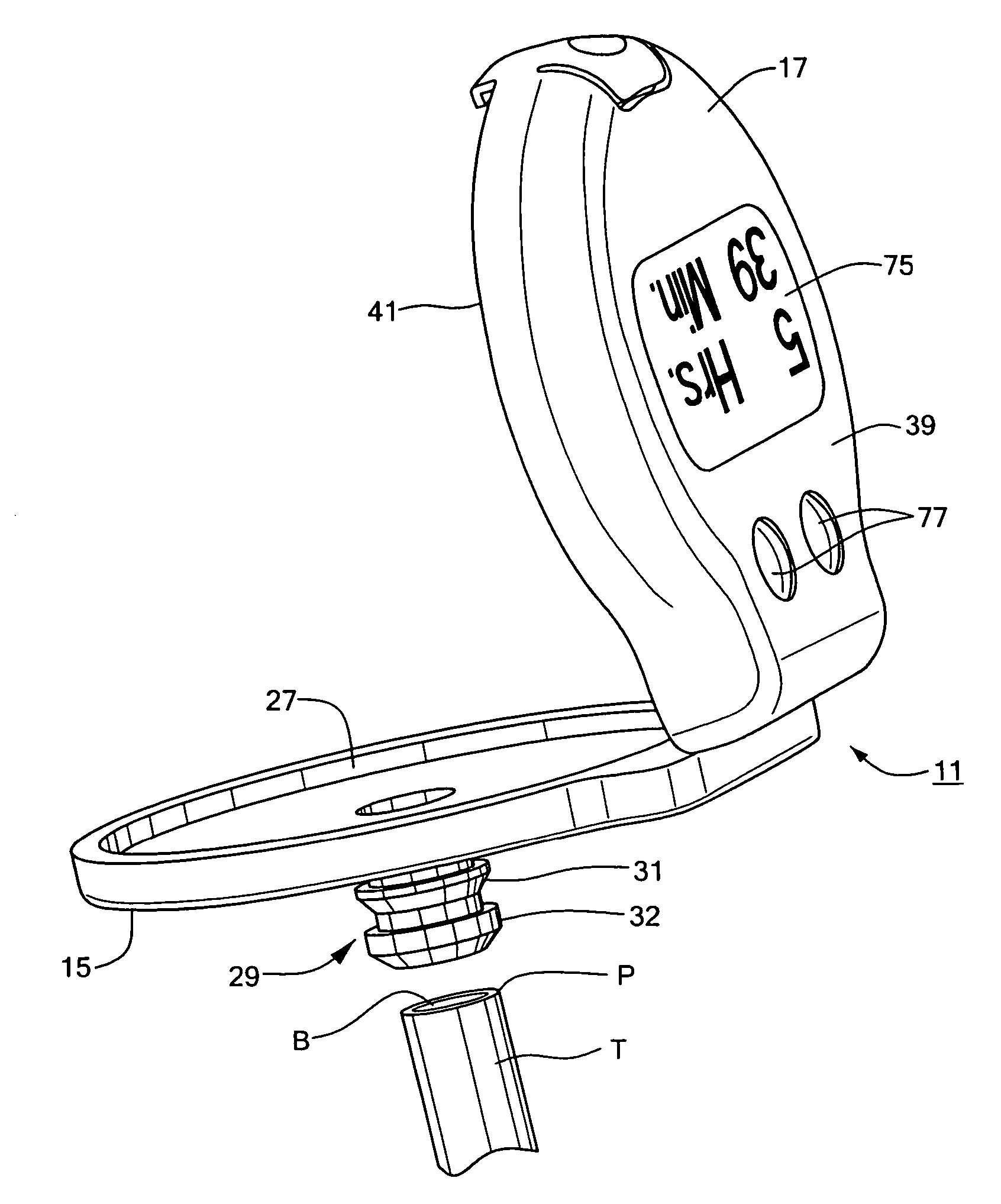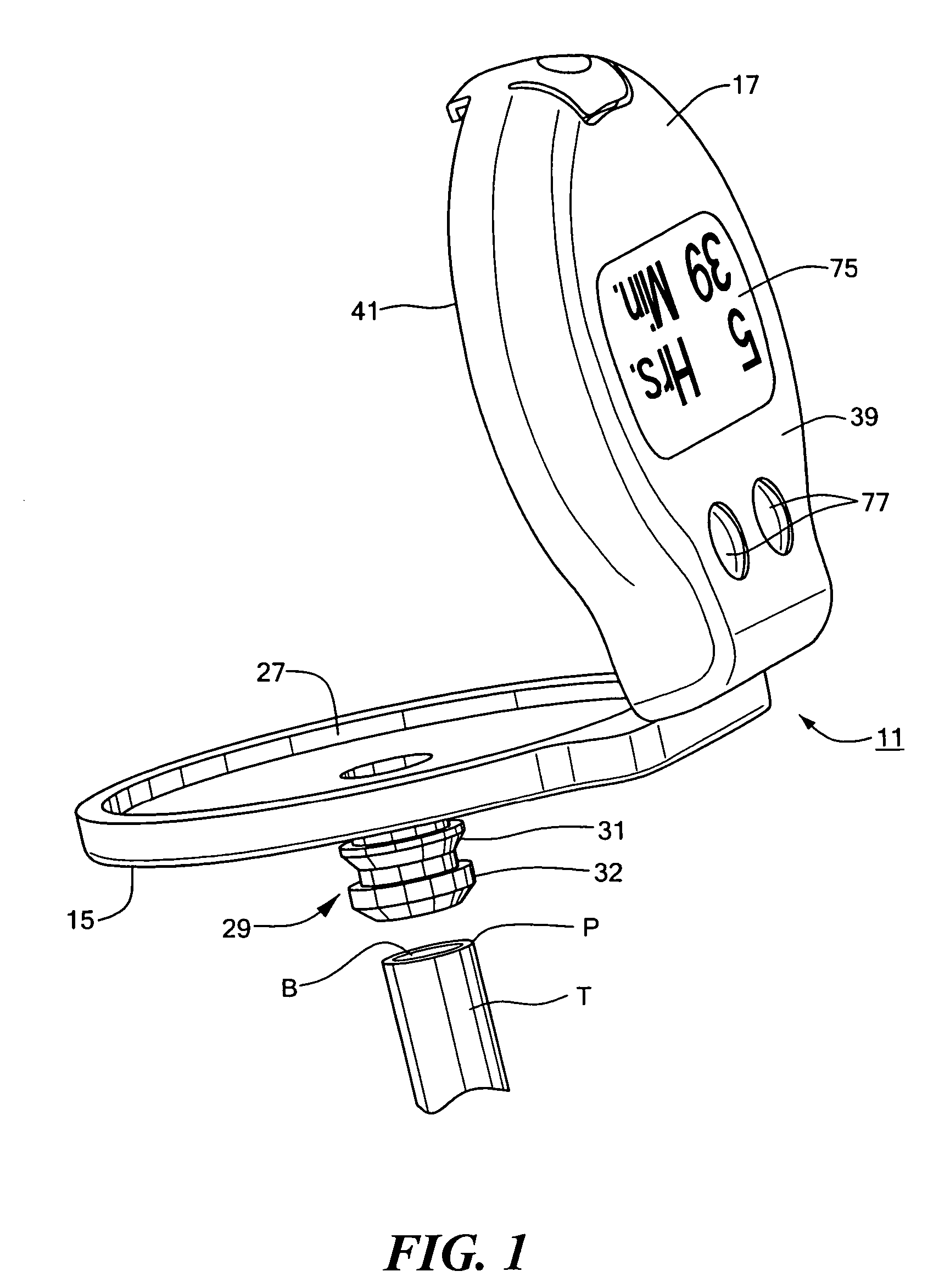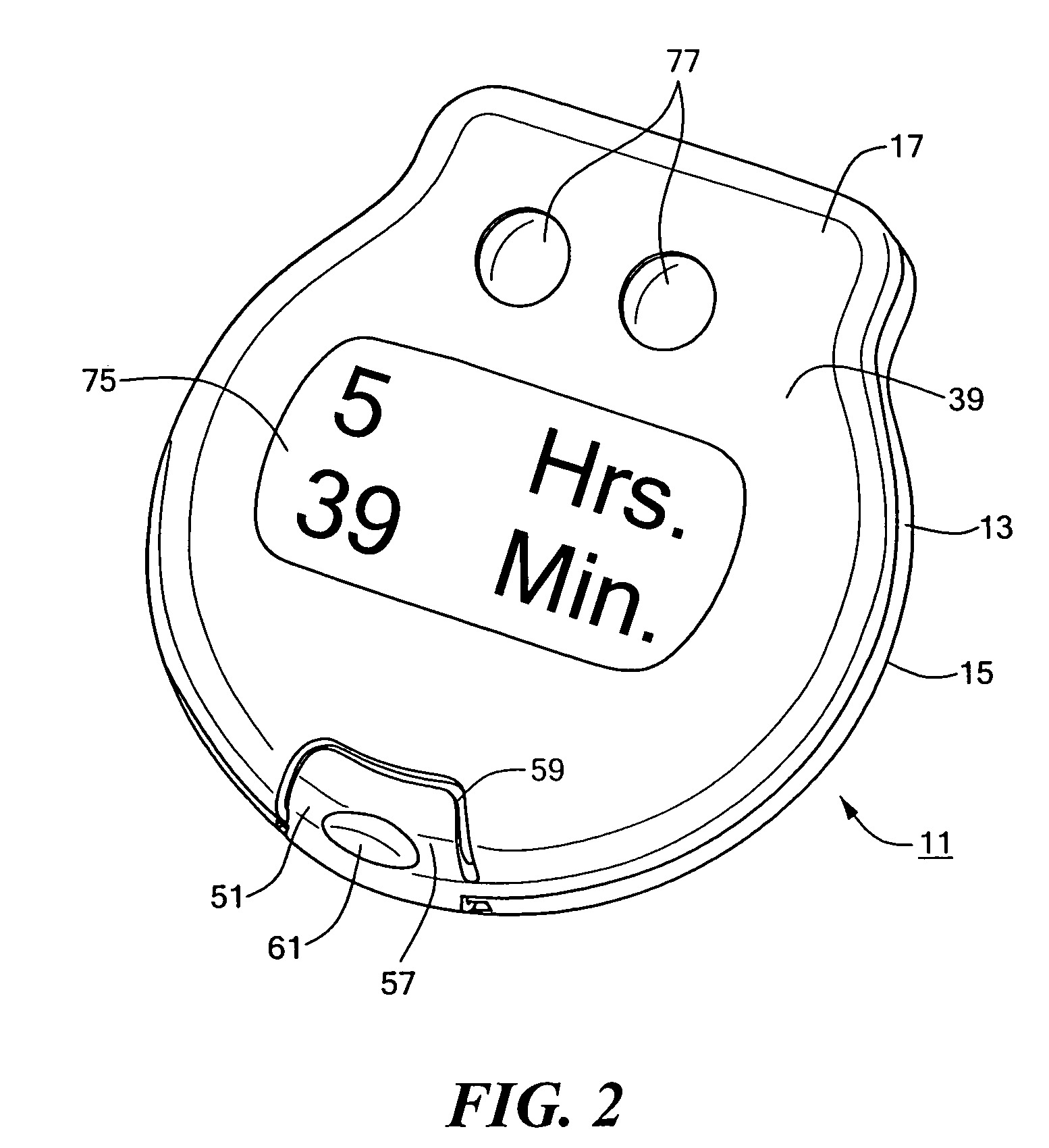Device for monitoring the administration of enteral nutritional fluids into a feeding tube
a technology for enteringal nutritional fluids and feeding tubes, which is applied in the direction of intravenous devices, medical devices, medical devices, etc., can solve the problems of inconvenient use, limited fluid administration rate control, and inability to take food and/or medications transorally. , to achieve the effect of convenient use and low manufacturing cos
- Summary
- Abstract
- Description
- Claims
- Application Information
AI Technical Summary
Benefits of technology
Problems solved by technology
Method used
Image
Examples
Embodiment Construction
[0034]Referring now to FIGS. 1-4, there are shown right side perspective, top perspective, front perspective and simplified electrical schematic views, respectively, of a device for monitoring the administration of enteral nutritional fluids into the body of a patient, said monitoring device being constructed according to the teachings of the present invention and represented generally by reference numeral 11. As will be described further in detail below, protective device 11 is adapted to be permanently coupled to the open proximal end P of an implanted gastrostomy feeding tube T, either directly or through one or more connective pieces of tubing (e.g., a Y-port). (It should be noted that, although device 11 is shown and described herein as being coupled to a gastrostomy feeding tube, device 11 may alternatively be coupled to a jejunostomy feeding tube or to other types of feeding tubes.)
[0035]Protective device 11 comprises a casing 13 which is constructed of a rigid and durable ma...
PUM
 Login to View More
Login to View More Abstract
Description
Claims
Application Information
 Login to View More
Login to View More - R&D
- Intellectual Property
- Life Sciences
- Materials
- Tech Scout
- Unparalleled Data Quality
- Higher Quality Content
- 60% Fewer Hallucinations
Browse by: Latest US Patents, China's latest patents, Technical Efficacy Thesaurus, Application Domain, Technology Topic, Popular Technical Reports.
© 2025 PatSnap. All rights reserved.Legal|Privacy policy|Modern Slavery Act Transparency Statement|Sitemap|About US| Contact US: help@patsnap.com



